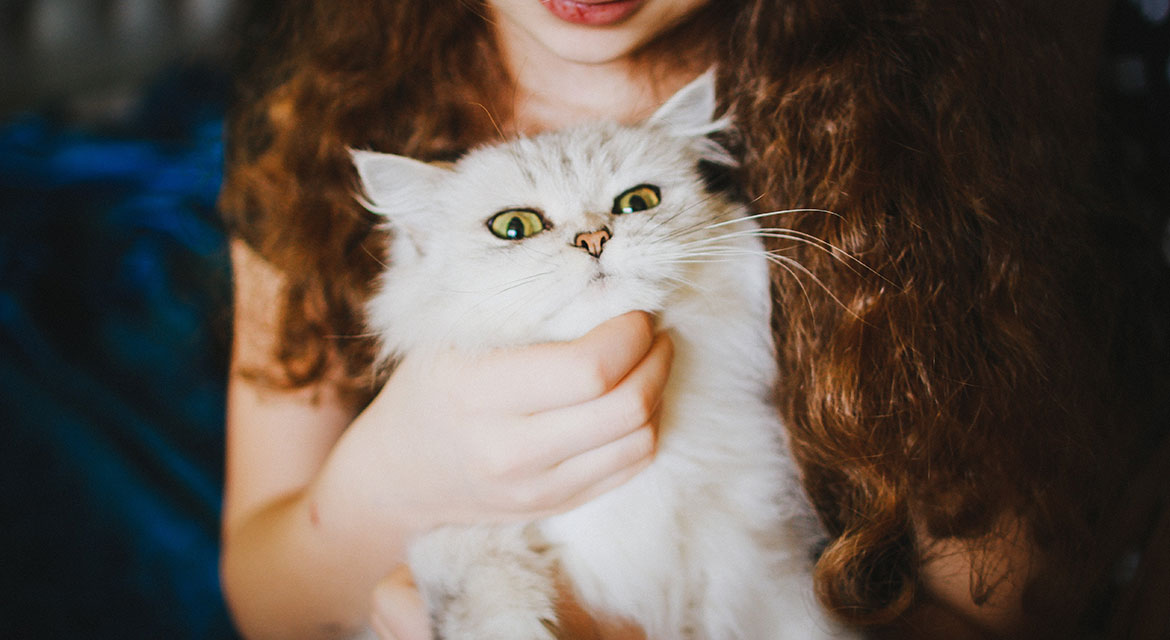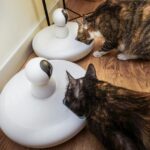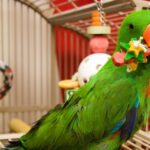 4 May
4 MayThe Essential Guide to Cat Playtime: Enhancing Your Feline’s Health and Happiness
Table of Contents
Cats may present themselves as independent creatures, but don’t be fooled by their composed demeanor. Regular cat playtime is fundamental to keeping your feline friend happy, healthy, and well-adjusted. Many cat owners underestimate how crucial cat playtime really is for their pet’s overall wellbeing.
Understanding Why Cat Playtime Matters
Despite their self-sufficient appearance, research demonstrates that interactive cat playtime is essential for a cat’s physical health, emotional well-being, and behavioral development. Cat playtime serves multiple crucial functions in your pet’s life, comparable to how exercise and recreation benefit humans.
Domestic cats, particularly those kept exclusively indoors, require consistent cat playtime opportunities to replicate the mental and physical stimulation they would naturally receive in the wild. Without adequate play, cats often develop behavioral issues including:
- Destructive tendencies
- Excessive vocalization
- Heightened anxiety
- Depression-like symptoms
Cat playtime also serves as a vital communication channel between you and your feline companion. Through interactive games, you establish trust, strengthen your bond, and create a shared language that enhances your relationship. Regular cat playtime sessions signal to your cat that they are valued and that their instinctual needs are recognized.
Physical Benefits of Cat Playtime
Improving Fitness and Preventing Obesity
The sedentary lifestyle of indoor cats presents significant health challenges that cat playtime directly addresses. According to the Association for Pet Obesity Prevention, approximately 60% of domestic cats are overweight or obese, dramatically increasing their risk for diabetes, arthritis, heart disease, and decreased lifespan.
Regular physical activity through cat playtime is one of the most effective strategies for weight management in cats. Interactive cat playtime sessions stimulate various movements that exercise different muscle groups:
- Chasing strengthens cardiorespiratory health
- Pouncing develops leg muscles and coordination
- Jumping improves core strength and balance
- Batting enhances fine motor skills and reflexes
Even short cat playtime sessions of 10-15 minutes, repeated 2-3 times daily, can significantly impact your cat’s fitness level. For senior cats or those with mobility issues, gentler cat playtime options still provide meaningful exercise that maintains muscle tone and joint flexibility.
Veterinary research indicates that cats who engage in regular cat playtime maintain healthier body weights, show better metabolic indicators, and often live longer, more active lives.
Managing Stress and Anxiety
Modern home environments, while safe, often lack the natural stimulation cats would experience in the wild. This understimulation can lead to chronic stress and anxiety, manifesting as destructive behaviors or withdrawal.
Cat playtime sessions provide cats with a healthy outlet for pent-up energy and nervous tension. During cat playtime, cats experience the release of endorphins – natural mood enhancers that create feelings of pleasure and contentment. This biochemical response helps counteract stress hormones, promoting a more relaxed emotional state.
Studies in feline behavior have demonstrated that cats with regular access to interactive cat playtime show measurably lower stress indicators, including:
- Reduced inappropriate urination or spraying
- Decreased excessive grooming
- Fewer aggressive behaviors
- More consistent sleeping patterns
- Better appetite regulation
For multi-cat households, structured cat playtime is particularly beneficial as it helps diffuse potential tensions between cats by redirecting competitive energies toward toys rather than each other.
Mental and Cognitive Advantages of Cat Playtime
Stimulating Natural Hunting Instincts
Despite thousands of years of domestication, cats retain their fundamental hunting instincts. In the wild, cats would spend approximately 6-8 hours daily hunting for food. Modern house cats still possess these innate drive sequences, and cat playtime serves as the primary outlet for these deeply ingrained behaviors.
When these natural instincts go unfulfilled, cats experience cognitive frustration and boredom. Interactive toys that mimic prey movements allow cats to engage in complete predatory sequences during cat playtime:
- Locating prey through sight, sound, or smell
- Stalking and assessing from a distance
- Chasing with focused intensity
- Pouncing with precision timing
- Grasping and “capturing” the target
Each phase of this sequence activates different neural pathways and provides distinct cognitive satisfaction. Toys that move unpredictably, like feather wands or electronic mice, most effectively trigger these hunting responses during cat playtime.
Advanced cat playtime options like puzzle feeders combine hunting simulation with food rewards, creating highly stimulating experiences that engage multiple instincts simultaneously.
Preventing Behavioral Problems
Mental stimulation through cat playtime is a powerful preventive measure against many common behavioral issues. A cat’s brain requires regular challenges to remain sharp and engaged, particularly for indoor cats with limited environmental stimulation.
Cats who don’t receive adequate mental enrichment through cat playtime often develop problematic behaviors, including:
- Excessive vocalization at inappropriate hours
- Destructive scratching of furniture
- Counter surfing and exploring forbidden areas
- Aggression toward humans or other pets
- Obsessive behaviors like excessive grooming
- Lethargy and depression
Research in feline behavioral health indicates that many of these issues can be significantly reduced through consistent mental stimulation and appropriate cat playtime. Interactive puzzle toys, training sessions, and rotating novel toys all contribute to cognitive flexibility and problem-solving abilities.
For particularly intelligent cat breeds like Bengals, Siamese, or Abyssinians, challenging mental exercises through cat playtime become even more crucial to prevent boredom-related behaviors.
Social Bonding Through Cat Playtime
Strengthening the Human-Cat Relationship
The bond between humans and cats is built primarily through positive interactions, and few experiences create more meaningful connections than interactive cat playtime. Unlike solitary play with stationary toys, interactive cat playtime positions you as a source of joy and fulfillment for your cat.
When you engage in cat playtime with your pet, several relationship-building processes occur simultaneously:
- Trust development: Your cat learns that interactions with you lead to positive experiences
- Communication expansion: You establish non-verbal cues that both understand
- Attunement: You become more sensitive to your cat’s preferences and signals
- Positive association: Your presence becomes linked with pleasure and satisfaction
Research demonstrates that cats who engage in regular interactive cat playtime with their owners show increased affection, greater responsiveness to their humans, and more frequent social behaviors like purring and seeking proximity.
For shy or traumatized cats, gentle, predictable cat playtime sessions can serve as rehabilitation tools, gradually building confidence and security in human relationships.
Managing Aggression and Overstimulation
Cat playtime serves as an essential regulatory mechanism for a cat’s emotional state and energy levels. Without appropriate outlets for their natural predatory behaviors, cats may redirect their hunting instincts toward inappropriate targets, including human hands, feet, or other pets.
Play aggression and overstimulation are common challenges that can be effectively addressed through structured cat playtime protocols:
- Scheduled cat playtime sessions help prevent the buildup of excess energy
- Appropriate toy selection teaches cats to distinguish between acceptable targets (toys) and inappropriate ones (human body parts)
- Reading body language during cat playtime helps identify early signs of overstimulation
Certified animal behaviorists recommend implementing a “play, feed, groom, sleep” sequence to mirror the natural rhythm of a wild cat’s hunt-rest cycle. This approach helps regulate your cat’s energy levels and reduces instances of inappropriate aggression.
Creating an Enriching Cat Playtime Environment
Choosing the Right Toys and Tools
The effectiveness of cat playtime depends significantly on selecting appropriate toys that match your cat’s play style, preferences, and instinctual triggers. Not all cats respond to the same toys, and understanding your individual cat’s preferences dramatically increases engagement levels.
Cats generally respond to toys that fall into these categories:
- Interactive wand toys: These extensions of your hand allow for dynamic movement that mimics prey behavior while keeping your hands safely distanced. Look for wands with feathers, fabric strips, or crinkly materials.
- Solo play toys: Self-entertainment options like springs, crinkle balls, or battery-operated moving toys provide stimulation when you’re unavailable for interactive cat playtime.
- Puzzle feeders and food toys: These cognitive enrichment tools combine cat playtime with food motivation, encouraging problem-solving and extended engagement.
- Environmental toys: Cat trees, tunnels, and shelving provide three-dimensional play spaces that encourage climbing, jumping, and exploring during cat playtime.
- Sensory toys: Items containing catnip, silvervine, or valerian root create additional sensory experiences that many cats find highly stimulating during cat playtime.
When selecting toys for cat playtime, consider:
- Safety factors: Avoid small parts that could be swallowed
- Size appropriateness: Smaller toys for petite cats, sturdier toys for larger breeds
- Texture preferences: Some cats prefer soft fabrics while others respond to crinkly materials
- Sound sensitivity: Quiet toys for skittish cats, noisy toys for bold personalities
- Rotation schedule: Keep a variety of toys and rotate them weekly to maintain novelty
Investing in a diverse toy collection ensures your cat remains engaged in cat playtime regardless of mood or energy level.
Incorporating Cat Playtime into Daily Routine
Consistency is the cornerstone of effective cat playtime implementation. Rather than relying on sporadic, lengthy sessions, research supports the greater effectiveness of shorter, regular cat playtime interactions distributed throughout the day.
Creating a structured cat playtime routine that aligns with your cat’s natural activity patterns yields optimal results:
- Morning cat playtime (5-10 minutes): Cats are naturally crepuscular, meaning they’re most active at dawn and dusk. A brief morning session helps discharge energy that accumulated overnight.
- Pre-mealtime cat playtime (10-15 minutes): Engaging in vigorous play before feeding mimics the natural hunt-then-eat sequence, providing psychological satisfaction.
- Evening interactive cat playtime (15-20 minutes): The most extended session typically works best in the evening when both you and your cat have more time for engagement.
- Bedtime wind-down cat playtime (5 minutes): Gentle play with a wand toy can help transition to sleep time.
Beyond scheduled sessions, enriching your cat’s environment with opportunities for spontaneous cat playtime significantly enhances their quality of life:
- Vertical spaces like cat trees encourage natural climbing behaviors
- Hiding spots support predatory stalking instincts
- Foraging opportunities through treat-dispensing toys simulate hunting satisfaction
- Window views with bird feeders provide visual stimulation
For working pet parents with limited time, technology offers additional solutions, including automated laser toys or interactive pet cameras that allow remote cat playtime sessions during your absence.
Expert Recommendations on Cat Playtime
The importance of cat playtime for feline health is increasingly supported by veterinary science and animal behavior research. Dr. Tony Buffington, a renowned veterinary specialist, has extensively documented how environmental enrichment through cat playtime directly impacts physiological markers of stress and disease susceptibility in cats.
His landmark studies demonstrate that cats with enriched environments including regular cat playtime show:
- Reduced instances of idiopathic cystitis (a stress-related bladder condition)
- Lower cortisol levels in blood samples
- Improved immune function
- Better appetite regulation
- Fewer instances of inappropriate elimination
These findings are reinforced by the American Association of Feline Practitioners, which now includes cat playtime recommendations in their guidelines for cat wellness care.
Real-world application of these principles shows remarkable results. The Jackson Galaxy Foundation reports that shelter cats enrolled in structured cat playtime programs show dramatically improved adoptability rates and faster acclimation to new homes.
In multi-cat households, certified feline behaviorist Pam Johnson-Bennett has documented how implementing strategic cat playtime reduces inter-cat aggression by up to 70% when consistently applied over a two-month period.
Even in cases of severe behavioral issues, cat playtime therapy shows promising outcomes. The Ohio State University Veterinary Medical Center’s behavior department reports an 83% improvement rate for cats with aggression issues when cat playtime protocol implementation is combined with environmental modification.
Conclusion: The Vital Importance of Cat Playtime
The evidence is clear: cat playtime isn’t a luxury it’s a necessity. Far beyond mere entertainment, regular interactive cat playtime serves as a cornerstone of feline physical health, mental wellbeing, and emotional balance. When you commit to making cat playtime a priority, the benefits extend to every aspect of your cat’s life and your relationship with them.
Implementing the strategies outlined in this guide from selecting appropriate toys to establishing consistent routines creates a framework for successful cat playtime that addresses your cat’s instinctual needs. By recognizing cat playtime as an essential component of responsible cat care rather than an optional extra, you position both yourself and your feline companion for a more fulfilling shared life.
The investment required is modest just 20-30 minutes of your time daily, distributed in short cat playtime sessions yet the returns are immeasurable. A cat who receives adequate cat playtime is typically:
- More physically fit and less prone to weight-related health issues
- More mentally stimulated and less likely to develop behavioral problems
- More socially engaged and responsive to human interaction
- More emotionally balanced with reduced stress and anxiety
- More adaptable to environmental changes and household disruptions
As you incorporate cat playtime into your daily routine, remember that quality matters as much as quantity. Engaged, attentive cat playtime that responds to your cat’s cues and preferences yields far greater benefits than longer but distracted sessions.
Your commitment to regular cat playtime isn’t just an investment in your cat’s present happiness it’s a foundation for their lifelong health and your enduring bond. Start today with even a five-minute cat playtime session, and watch as your feline friend responds with renewed vitality and connection.
Frequently Asked Questions About Cat Playtime
How long should cat playtime last each day? Most experts recommend a total of 20-30 minutes of interactive cat playtime daily, ideally divided into 3-4 shorter sessions of 5-10 minutes each. Senior cats may need shorter, gentler cat playtime sessions, while kittens and high-energy breeds might benefit from up to 45 minutes daily.
My cat doesn’t seem interested in cat playtime. What should I do? Start with brief cat playtime sessions using different toy types to identify what triggers your cat’s prey drive. Try playing at dawn or dusk when cats are naturally more active. Use toys that mimic natural prey movements quick, erratic motions along the ground often work better than dangling objects.
Are laser pointers good toys for cat playtime? Laser pointers can provide excellent exercise during cat playtime but should be used thoughtfully. Since cats can never “catch” the dot, always end laser play by directing the dot to a physical toy your cat can capture, providing closure to the hunting sequence.
Should I let my cat “win” during cat playtime? Yes! Allowing your cat to successfully capture the toy periodically during cat playtime provides psychological satisfaction and completes the hunting sequence. Constant frustration without success can lead to disengagement or anxiety.
Can cat playtime help with aggression issues? Regular cat playtime can significantly reduce many forms of aggression by providing appropriate outlets for predatory behavior and excess energy. However, for established aggression problems, consult with a certified feline behaviorist who can create a targeted behavior modification plan that includes specialized cat playtime protocols.
Your investment in quality cat playtime will reward both you and your feline companion with a happier, healthier relationship for years to come.
You May Also Like :
How to Stop Dog Barking: The Complete Guide to a Quieter, Happier Pet
Comprehensive Guide to Interactive Cat Toys: Keeping Indoor Cats Happy and Healthy
Dog Grooming at Home: The Complete Guide for Dog Owners
10 Essential Dog Training Tips Every New Puppy Owner Should Know
How to Take Care of a Pet: Essential Guide to Responsible Pet Ownership
The Ultimate Guide to Cat Playtime: Why Play Is Essential for Your Feline’s Health and Happiness
How to Successfully Work from Home with Pets: A Comprehensive Guide
The Mental Health Benefits of Having a Dog: What Every Pet Owner Should Know
How to Groom a Puppy for the First Time: Step-by-Step Guide
Quick Solutions for Daily Pet Care: Simple Strategies for a Happier Pet and Easier Routine




